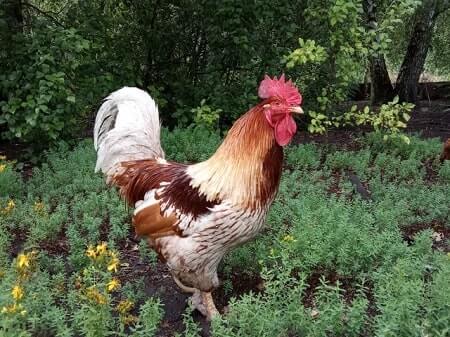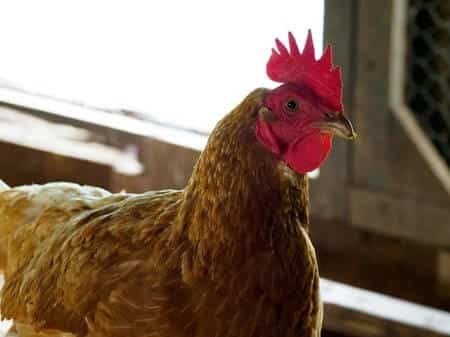Looking at an ISA Brown rooster vs hen there are some noticeable differences when they’re chicks. Hens (females) tend to be mostly red, with white flecks or speckles of color. While roosters (males) are white with brown patches.
Table of Contents
How To Tell if ISA Brown Chicks Are Male or Female
With a lot of breeds, it’s almost impossible to tell the male and female chicks apart as they’re the same colors. When they start to develop combs and wattles at the age of around 6-8 weeks you can often start to tell.
Males tend to have larger wattles, that’s usually the first sign. Their wattles also tend to be redder, and will often have thicker legs. It’s small physical characteristics like this that people typically look for.
There are some methods of sexing a chick before this, but they’re generally not that reliable.
However, some breeds are known as ‘autosexing’ breeds, and this includes ISA Browns. This means that male and female chicks are different colors, at least in part.
That makes it very easy to tell if a chick is male or female. Of course.
ISA Brown Female Chicks Appearance
ISA Brown female chicks are red with ‘splashes’ of white mixed in. As they age, these white bits are easier to see. Adult hens are a chestnut brown color with white tail feathers and usually have some white markings down their sides.
ISA Brown Male Chicks Appearance
ISA Brown male chicks are white with ‘splashes’ of brown mixed in. As they age, they retain these colors become are more stocky as roosters often are. They also have longer and more upright tail feathers.
Related - What to know what straight-run chicks are? Read this.
What Breeds Make an ISA Brown?
This the question a lot of people have been wondering ever since the ISA Brown was first introduced in 1978.
It’s a closely guarded secret, however. This is because the ISA Brown was created by a company called the Institut de Sélection Animale (ISA). (Hence the name ISA).
The Institut de Sélection Animale have kept how they created the ISA Brown secret. They’re fully entitled to, and it’s a smart business decision.
I’ve read a few educated guesses as to the breeds that were crossbred to make the ISA. Wikipedia suggests that it’s a result of complex crosses with Rhode Island Reds, Rhode Island Whites, and genes from several other breeds.
That would help explain why they look a lot like Rhode Island Reds, and are prolific layers. As to the actual crossbreeding and genetics that make the ISA Brown, unless the company behind it tells us, we’ll have to keep guessing.
There are lots of places online you can buy ISA Browns. These are not ‘genuine’ ISA Browns unless they say they’re sourcing them from Merck & Co, who merged with Institut de Sélection Animale though.
ISA Brown Rooster Temperament

The temperament and personality of a rooster can vary from docile and friendly, to an absolute menace that poses a serious health risk.
The breed of a chicken does play a large part in this though. The good news, ISA Brown roosters are known to be more on the docile side than aggressive.
This doesn’t mean they aren’t capable of attacking hens, or you for that matter. Roosters tend to be at their most aggressive when they hit puberty at around 4-5 months of age, so you should know around then what kind of temperament your rooster has.
Related - Do roosters have spurs?
ISA Brown Hen Temperament

The temperament of ISA Brown hens is another huge plus when it comes to raising them in an urban or backyard setting.
They are known for being very affectionate and friendly - as far as chickens go. They are one of the breeds that actually seem to enjoy (tolerate?) being picked up and fussed over.
Making them a great choice if you have kids. As long as you know your rooster isn’t protective of his hens or aggressive in any way, they’re great for kids to get up close and learn about chickens.
Summary
You know now the physical differences in appearance between ISA Brown roosters and hens. Whether you have chicks or adult chickens, there is no mistaking the difference. ISA Browns are one of the easiest types of chicken to tell the difference between.
If you’ve recently added some to your flock, I’m envious. They’re one of the easiest, most rewarding, fun, and of course, prolific laying breeds.
If you want to find out more about ISA Browns, check out these other posts I’ve written about them:
- When do ISA Browns start laying eggs?
- ISA Brown Chickens Lifespan (what to expect when owning an ISA Brown)
Resources
Image credits - Header photos by Людмила Королюк and Brett Jordan on Unsplash




